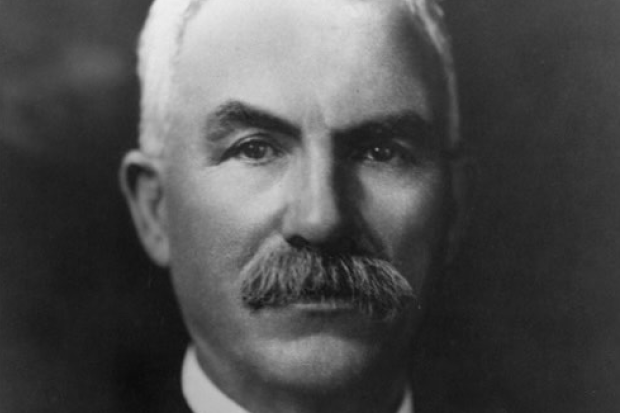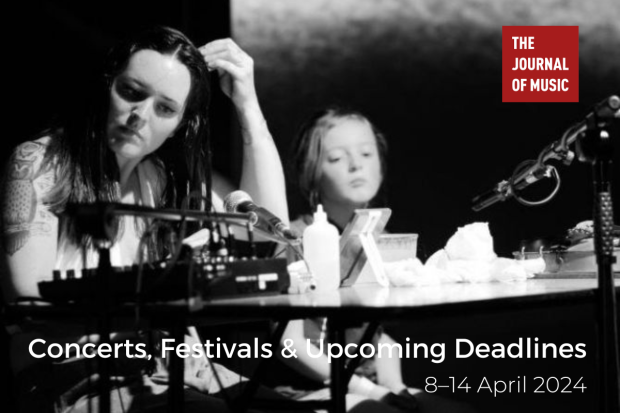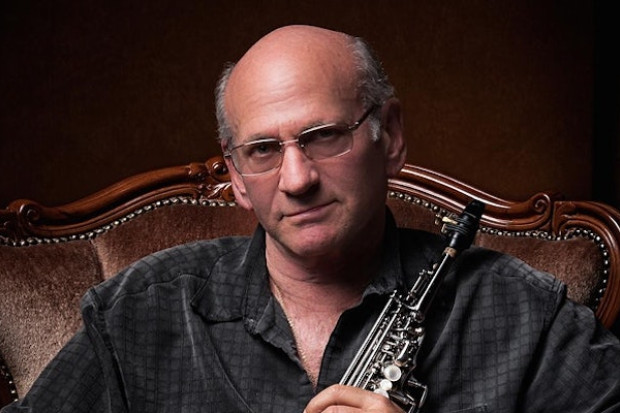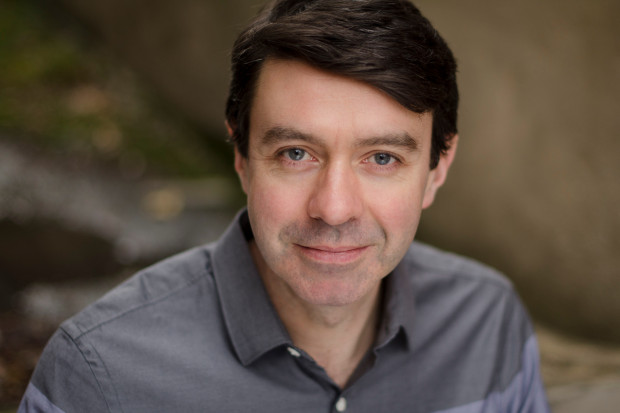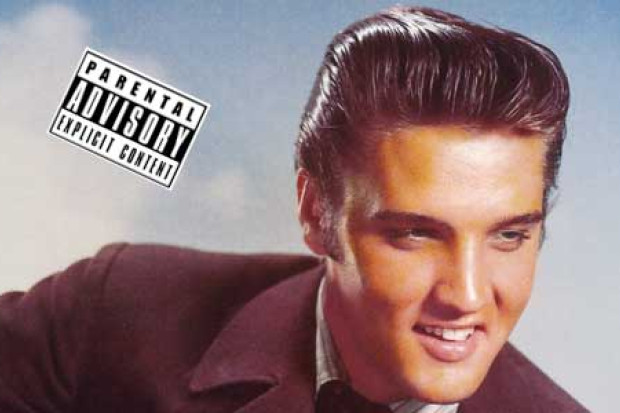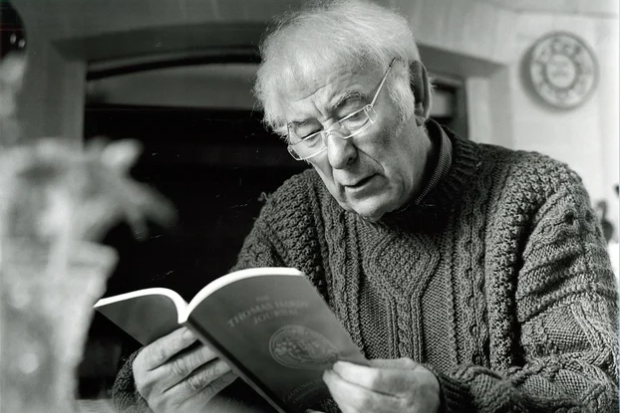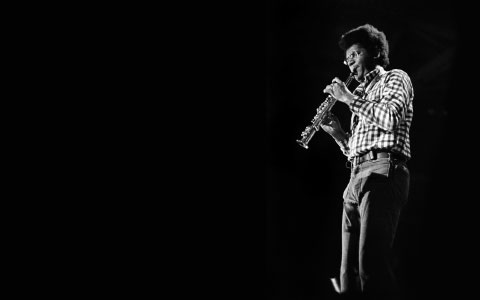
Anthony Braxton
'Write Whatever You Want'
Let’s begin with a selection of music: a quartet (reeds, brass, bass and drums) playing anything from relaxed post-bop to relentless, cumulative structure-building; a dialogue between clarinet and moog synthesiser; a saxophone quartet; a trio for reeds, little instruments and voice (in two distinct realisations, both involving written and improvised elements); a piano/reeds duo covering anything from Scott Joplin ’s Maple Leaf Rag to works more reminiscent of the European avant-garde of the 1960s; a quartet (trumpet or trombone, reeds, bass and drums) in long, complex but frequently exuberant free-bop live recordings; a recording of pieces for solo saxophone (a few reconceived jazz standards alongside improvisations tightly focused on a particular sound area); a lengthy work for four orchestras; a long, busy but quite airy work for two pianos; an album of works for improvising orchestra, ranging again from what might be called exploding atonal marching music to hushed sonic exploration…
Rather than being the work of a variety of musicians across the spectrum of contemporary creation, this is merely a list of the work done by one Chicago musician, Anthony Braxton, for the Arista label in the 1970s. (Steve Backer and Michael Cuscuna must be credited with making the recordings possible.) These were just some of the projects that Braxton worked on in that period; significant recordings also appeared on other labels (Trio and Duet on Sackville, for example). The list above shows that, when the door opened for Braxton, when a major record company decided to single him out as a talent of the future, he seized the opportunity and got some aspect of every form of music-making that interested him onto record. After that door closed, the LPs could be found by the determined collector, but we have had to wait till now, with the issuing of The Complete Arista Recordings by Mosaic, for these records to find their way onto CD. As a result, some of the attractive material on the New York, Fall 1974 and Five Pieces (1975) albums or the Montreux/Berlin Concerts Live (1975) – music that could have encouraged the casual listener to embark on the journey into the more distant regions of the Braxton universe – has been frustratingly inaccessible. Though this attractive boxed Mosaic reissue (which includes a comprehensive essay by Mike Heffley, recording details and photographs) costs more than a few euro, it does make it possible once again to follow the full career-path of this exciting and contentious figure.
As it was through a chance encounter with another Braxton quartet that I had one of the most dramatic and decisive eureka moments of my musical life [See The Journal of Music, March–April 2006], and as it was a stunning duo concert with Richard Teitelbaum in Paris in the early 1980s that showed me how electro-acoustic music can reach exhilarating depths and heights, I have long had a sense of personal gratitude to Braxton for blowing the lid off my musical world – which doesn’t mean that I have to love all of his music. He is, however, one of the most impressive examples of self-renewing and inspiring creativity in music today. With over a hundred recordings to his name, only the fanatical can keep up with all of Braxton’s activities, but I have continued to dip into the older work, to sample new delights and to pay some attention to the diverse careers of the many outstanding musicians who have worked closely with him (Kenny Wheeler, George Lewis, Leo Smith, Ray Anderson, Marilyn Crispell, Gerry Hemingway and on to Joe Fonda and Kevin Norton). A concert in London a few years ago showed that he has not lost the capacity to find and release the talents of young musicians – and to play with youthful zest in their company. Trumpeter Taylor Ho Bynum is probably the most prominent of the current crop. He was heard with the man himself at SARC in Belfast a few years ago, on Braxton’s only Irish visit [See The Journal of Music, July–August 2006].
Anyone familiar with Braxton’s work of the 1970s would have at least a vague idea of the particular nature of the music scene from which he emerged in the late 1960s, first on a recording by Muhal Richard Abrams and then on recordings under his own name (Three Compositions of New Jazz and For Alto, his still startling opening-up of solo saxophone improvisation). Abrams, Braxton, Roscoe Mitchell and the other talents gathered in the Art Ensemble of Chicago, percussionist Steve McCall, violinist Leroy Jenkins and their fellows seemed to embody a distinctive conception of musical space and of the relationship between improvisation and structure and between individual and group. There also seemed to be a mutual support system in operation, with the more prominent figures seeming happy to play support roles on others’ projects. This group ethic seemed to connect with the umbrella term AACM (Association for the Advancement of Creative Musicians) under which they frequently appeared. It was characteristic, too, that Braxton should use the word composition in his first album title, that one of the groups in which he first appeared was called the Creative Construction Company and that the above-mentioned Art Ensemble of Chicago (who burst onto the European scene in 1969) should choose a name with no jazz connotations – seizing the language of classical music, it might be said. Even to the casual listener or observer, it seemed that this group of musicians was interested in breaking down tidy divisions between jazz and contemporary composition and that it was not confining its ambitions to the atonal free-blowing variations on the head/solo format that predominated, not only in mainstream jazz, but also in the work of innovators like John Coltrane or Ornette Coleman and their followers in the New York avant-garde. There was something constructed and constructive about the AACM approach; its practitioners were often explicit in supporting political and cultural freedom for black America, many adopting African names and drawing explicitly on African culture, but its idea of freedom was not that of the most prominent spokesperson for the black New York avant-garde, LeRoi Jones (later Amiri Baraka).
It seemed curious that a forcefully challenging and confident music should emerge, not just from Chicago, but from the largely black, segregated, impoverished housing projects of the South Side. Biographical notes and interviews might refer to this background, to time spent in Army bands and so on, but until now, with the publication of George E. Lewis’ A Power Stronger than Itself, there has been no overview of the whole phenomenon and no thorough-going investigation of the many issues it raises.
It seems particularly appropriate to the multi-faceted and empowering vision of the AACM that the George E. Lewis (Edwin H. Case Professor of American Music at Columbia University) who offers us this 676-page book (including almost a hundred pages of notes and a thirty-five page bibliography) should also be the George Lewis whose swagger, technique, humour and sheer power astounded audiences when (as a very young and almost unknown trombonist) he replaced Kenny Wheeler in Braxton’s great mid-seventies quartet, the George Lewis whose solo performances reinvented trombone technique, whose duo albums with Braxton include material both exuberantly rhythmic and abstruse, whose beautifully achieved, slow-moving 1980 Homage to Charles Parker subtly combined electronics and individual improvisation, whose musicality is expressed both in improvisation and in composition, whose curiosity and openness have led him to collaborate with musicians of all kinds, whose interest in computer/performer interaction has led him to develop increasingly flexible software technologies, and whose teaching and theoretical writing have pushed for a revision of the conventional mapping of both jazz and experimental music.
Lewis’ musical versatility is complemented by his versatility as a writer. Knowing that it was important to record the experience of the first generation of AACM musicians (some of whom have already died) and that an over-theoretical approach would make the book inaccessible to many who have played a part in the history of the AACM, he has chosen to ground the book in interviews with AACM members and to leave the more theoretical material until later in the book. It is clear that much of the information, opinion and personal history revealed to Lewis – and to us – would have remained hidden if the interviewees had not trusted in the good faith and understanding of the author. And indeed Lewis has done his utmost to make the book a collective history as well as an individual work of synthesis and analysis. It was his good fortune to have access to recordings of the original meetings, so that he is able to convey an almost eyewitness perspective on the shaping of the movement. It should also be said that, though Lewis is still connected with the AACM, he makes no attempt to hide the tensions and disagreements that have been part of the movement’s history. The founders of the AACM knew that the particular problems facing the people of the South Side of Chicago required long-term, constructive work. To ensure that the organisation would not deviate from this primary goal, the AACM was from the beginning an association of black musicians – but Lewis acknowledges that this position is not without its difficulties. The tensions between those who moved away and those who stayed in Chicago are also covered, as is the tardiness with which the AACM offered full respect to female musicians, even though a handful of women played an important role from the beginning.
Where Chicago is concerned, Irish readers might be aware of the clientelism, reactionary ideology and racism of the notorious Mayor Daley machine or of the achievements (as traditional music collector and historian) of Chief O’Neill of the Chicago police. The Chicago of A Power Stronger than Itself is a different one, largely the product of the Great Migrations that saw massive movements of impoverished and oppressed black populations from the South of the United States into the industrial North. Though many were to find employment, they did not escape from segregation and racism as they were crowded into small apartments in huge impersonal and under-resourced housing projects. Just as the towers in Dublin’s Ballymun were called after some of the idealists who had led the 1916 Rebellion, the Robert Taylor Homes were named after a city official who had fought unsuccessfully to prevent segregated housing. This is how The Economist summed matters up in July 1998:
Architecture, racism and even good intentions have conspired to create a poverty trap in Chicago’s housing projects. As elsewhere, public housing was first designed in the 1930s as transitional housing for the working poor, often with stiff eligibility requirements that screened out the neediest. Chicago’s special problems were born in the 1950s when local politicians, including the mayor, Richard J. Daley, began to use public housing to segregate the city’s rapidly growing black population. Meanwhile, city builders had become enamoured of Le Corbusier’s vision of urban buildings as ‘islands in the sky’. The result was hulking high-rises in poor black neighbourhoods, the worst of which is an uninterrupted four-mile stretch of public housing on the city’s south side.
The struggle for existence could be a tough one and it was easy for young men to be drawn into the gangs that operated on the streets.
The movement from South to North also helps to explain the connection between AACM musicians and musicians as far away as St Louis, where a group of like-minded musicians and artists set up BAG (the Black Artists Group). Lewis has also interviewed some of these. An incidental detail in the recollections of Emilio Cruz leaps from the page with the effect of a poem. Coming from Spanish Harlem, he thought he knew poverty.
But when I went to St Louis, I saw collective despair in ways that I was not prepared for…. In Pruitt-Igoe, the windows were all knocked out in the dead of winter, and so the pipes broke, and there was an iceberg that went from the top floor, which was about twenty stories up, all the way down to the bottom. People were living there like animals.
St Louis musicians like Oliver Lake and Julius Hemphill would, like the Chicagoans, eventually gravitate towards New York.
Blues, soul, gospel, rhythm and blues, rock ‘n’ roll, jazz of all kinds – Chicago would be home to all of these as numerous streams of musical culture met and mingled. It would be wrong, however, to romanticise the situation, given the power structure within which the musicians operated. Nonetheless, music could open doors for those with talent. Under demanding and sometimes tough leadership, young players in school bands learned technique and discipline that would stand to them in adult life. Some idea of the importance of such teaching may be gained from the fact that – according to Richard Wang, an AACM teacher in the early days – an avant-gardist and member of the Art Ensemble like Joseph Jarman was talking fondly of his high-school music teacher, Captain Walter Dyett, in an interview in the early 1980s: ‘He was like this eternal spirit manifested in living form. One had to experience his vibrancy. We can talk about his vision, but for him to look at you with those eyes, to smile at you, for this giant to say you’re cool….’ As late as last August there was a concert to commemorate the redoubtable captain, who had taught 20,000 students – ranging from Dinah Washington and Bo Diddley to Richard Davis and Joseph Jarman – in the course of his career. At a time when jazz was not accepted in the school system, he had created a high-quality jazz band and provided stimulating material and personal encouragement for the players. It wouldn’t be difficult to imagine people who came under his sway – with his motto ‘He can who thinks he can’ – finding the encouraging philosophy of the AACM congenial.
As US involvement in Korea and then Vietnam created demand for soldiers, young black men were always most at risk of ending up in combat – and in coffins. As the civil rights movement grew and as various forms of black radicalism asserted themselves too, it wasn’t always obvious to those who received so little from their society why they should be first to die in its alleged defense in the jungles of South-East Asia. Third-level education could postpone the prospect of being drafted, but if a musician was drafted, an army band was a far more attractive option than a combat unit – though again racism seems to have been endemic and institutionalised. How then did a significant number of those who had postponed or avoided or survived the draft end up in the musical avant-garde of Chicago? An isolated but highly motivated figure like Anthony Braxton might well have gone on to make a career of some kind for himself in music, but it is hard to avoid the conclusion that it was the musical, organisational and, in the end, ethical leadership of one individual, Muhal Richard Abrams, that was the crucial factor.
It was Abrams whose house was always open to young musicians, whose Experimental Band gave many a creative space in which to develop, who was one of the founders of the AACM, who told young musicians that they should consider themselves player/composers and then created the unofficial school that gave them the confidence, the grounding in music history and the technical means to become complete musicians. The AACM was a democratic cooperative that changed and developed, but it was Abrams who laid down the guiding principles and was himself the guiding light of the movement. It would be wrong to paint him as a secular saint, but there can be no doubting his constructive influence. This passage captures the flavour of the experience:
After daily classes with the dedicated, expansive Wang, the young musicians would join the nightly throng at Peggy and Richard Abrams’s tiny basement apartment on South Evans, where they would explore musical, cultural, political, social, and spiritual ideas. Abrams’s range of experience and interests deeply affected the young musicians. ‘Muhal’s place would always stay packed with people,’ said Mitchell. He’d have all this time for all these people, and still at the end of the week he’d come to the band with a big-band chart.’
A quotation from Jarman shows how composition was encouraged:
[Muhal] said, ‘Write whatever you want and we’ll look at it.’ There was no judgment thing. We might say thumbs down or thumbs up individually or personally but no one would ever say that publicly. I might bring a piece in and they’ll play it. They won’t say whether they like it or not but they’ll do their darnedest to play it as best they could.
Presumably, hearing their own music played in a non-judgemental environment that also involved intense discussion, the transmission of various methods of composition and exposure to all kinds of music would have induced young player/composers to raise their own standards. Abrams’ words as quoted by Jarman in a 1967 interview (‘Don’t just think about what you’re playing when you play a solo – think about what came before and what’s going to come after’) underline the general approach: soloing was not to be seen as a form of unananchored emotional self-expression but as a contribution to an overall statement or structure. This may seem a relatively straightforward matter but it opens out onto broader issues.
For someone like LeRoi Jones (Amiri Baraka), free music was a way of giving voice to the pain, anger and hope of the oppressed black community of the United States. It was, therefore, almost the duty of the player, no matter how avant-garde, to speak within an expressionistic and black-nationalist idiom. This is where Anthony Braxton ran into trouble at an early stage. Though well capable of playing in or near the tradition – see the standards he has always played, the zesty Monk album, or the way he was able to find common ground with Max Roach – he seemed, even at his most energetic, inclined to attack accepted idiom, tearing it to pieces or obsessively pulverising a phrase or motif and building new shapes with the fragments. (It is quite a long time since I heard the track, but even those who hate what Braxton is doing should listen once to his ferocious assault on ‘Nefertiti’ on the Circle Paris Concert album, where the pianist is Chick Corea. For those unfamiliar with the music of the seventies, it may come as a surprise that, for a short period, Braxton and Corea created some excellent music together.) As well as being notoriously addicted to cardigan-wearing, Braxton was also overtly intellectual in manner and in his musical references and could also play and compose in an entirely unidiomatic, non-blues/jazz-based style – which, to some eyes, aligned him with the (white) Euro-American avant-garde and made him a traitor to his own people. In addition to making frequent reference to the music of Stockhausen, Braxton performed with Musica Elettronica Viva (MEV) during his first European stay in the early seventies. Frederic Rzewski, Alvin Curran and Richard Teitelbaum were the core members of that group – and Braxton has maintained a fruitful relationship with Teitelbaum over the decades.
There is a dogged determination behind Braxton’s multifarious activities, but as his musical philosophy, his musical practice, his utopian longings and his realised and unrealised projects partake of an over-arching vision, it would be almost impossible for him to compromise on his core beliefs. Whereas his critics saw him as compromising with the white avant-garde, Braxton saw himself as a world musician (in a quite different sense from that current in music stores and the media today) – and as creating a model of true freedom in envisioning a music of the future that would or could bring his own heritage into dialogue with other musics, whether African, Asian or European. Some supporters of the Spanish Republic were later denounced for having been ‘premature anti-fascists’; if similar terminology were to be applied to Braxton, he would perhaps be seen as a premature post-racist, universalist in music.
Braxton’s is an extreme case, but he was not alone in moving to the East Coast in search of a living. In his chapter on the AACM in New York, George Lewis shows the intensity of debate surrounding their music:
…experimental musicians who were familiar with the important earlier work of the influential critic and activist Amiri Baraka [LeRoi Jones] might have been particularly surprised at the vehemence with which he denounced the hybrid new music of the AACM in a collection of his 1980s critical essays on music. Baraka disparages an unnamed violinist (probably Leroy Jenkins) as a member of what he calls the ‘Tail Europe’ school, whose members were presumably unduly influenced by European modernism. According to Baraka, the project of ‘Tail Europe’ was to ‘take music on a tired old trip, deliberately trying to declass the music, transforming it into a secondary appendage of European concert music, rather than the heroic expression of the folk and classical music of the African American majority as well as the spirit of a progressive and populist high art.
Lewis goes on to quote Baraka on a saxophonist (Braxton presumably) wanting to show ‘white folks how intelligent he (they) is’. Lewis points out that this is a nostalgic position, as ‘[j]azz had by this time long since ceased to be a music of the black majority, but here, the music is reenlisted in the quest for that elusive being, a democratic and populist high art.’ In the impressive pages that follow, Lewis articulates his own position in depth through analysis of, and dialogue with, a range of critical writing, and also through examination of the contexts in which music was produced. Quite apart from what he offers directly in the text, Lewis’ foot-notes are also quite suggestive, opening up numerous paths of enquiry to the reader curious about such questions as the relationship between jazz and classical music, the so-called Third Stream, institutional bias regarding funding, tensions between AACM and the existing New York scene, the way in which certain classical elitists (avant-garde composers not excluded) and black nationalists join each other in prescribing the territory appropriate to black musicians, and high/popular culture debates. Lewis’ reading of the category-troubling that the AACM always seems to induce is encapsulated here:
Where Baraka sees overt class struggle in the composition, performance, appreciation, analysis, and critical writing about the music, I would maintain that on this very view, the AACM represents an indigenous working-class attempt to open up the space of popular culture to new forms of expression, blurring the boundaries between popular and high culture. As African American musicians sought the same mobility across the breadth of their field that (for example) African American writers and visual artists were striving for, engagement with contemporary pan-European music became a form of boundary-blurring resistance to efforts to restrict the mobility of black musicians, rather than a capitulation to bourgeois values. AACM musicians felt that experimentalism in music… could take many forms, draw from many histories (including the blues), confront different methodological challenges, and manifest a self-awareness as being in dialogue with the music of the whole earth.
Like Anthony Braxton, George Lewis does not apologise for breaking stereotypes. He is an academic as well as a performer, but sees all his activities as interconnected. He and Braxton refuse the thought/feeling polarity. In A Power Stronger than Itself, Lewis is a chronicler, an analyst and an active member of a community. Centred on a series of funerals, the twelfth chapter, ‘Transition and Reflections’, is a loving and beautifully detailed memorial to AACM members who have died and a recognition of the importance of shared experience, friendship and memory. The chapter is best read as a whole, but one moment may be extracted here:
In deterritorialized space, I ventured to myself, home is where the funeral is. Genre-busting goes so far, and then the homegoing takes over, where it becomes evident as to who your real community is, the one that will take care of you no matter what.
A Power Stronger than Itself is an impressive tribute to the AACM community; it should not, however, be seen as a memorial. It is to be hoped that it will draw new listeners to the music and stimulate continuing debate. That the creative level of the Chicago section of the AACM should have dropped after the departure of so many of the leading figures of the first generation was probably inevitable, but the organisation is still active, still true to its principles and still throwing up new talents. Meanwhile, Muhal Richard Abrams, Roscoe Mitchell and George Lewis can be heard in happy combination on the CD Streaming (Pi, 2006). The eight full-length CDs of The Complete Arista Recordings of Anthony Braxton are less a memorial to a moment in musical history than a very welcome act of rediscovery. As a glance at his ever-lengthening discography would suggest, for Braxton himself the process of discovery continues.
A Power Stronger than Itself, The AACM and American Experimental Music, George E. Lewis. The University of Chicago, 2008.
The Complete Arista Recordings of Anthony Braxton, Mosaic, 2008.
Published on 1 June 2009
Barra Ó Séaghdha is a writer on cultural politics, literature and music.












